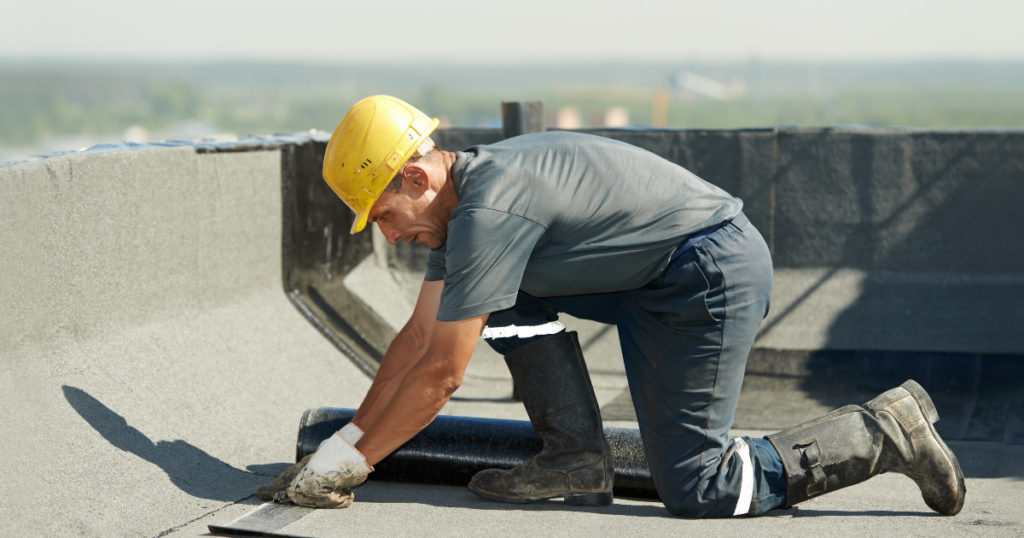Flat roofing systems are a common choice for both commercial and residential buildings. They offer unique advantages, such as space utilization and easy installation of rooftop equipment. However, like any roofing system, flat roofs require regular maintenance and, occasionally, repairs to ensure their long-term durability and performance. In this blog, we will explore the essential aspects of flat roofing repair for both commercial and residential properties.
The Importance of Timely Repairs
Before delving into the specifics of flat roofing repair, it’s crucial to understand why timely repairs are essential:
- Preventing Water Damage: Flat roofs are more susceptible to water pooling and leaks compared to sloped roofs. Prompt repairs prevent water infiltration, which can lead to costly interior damage and mold growth.
- Extending Roof Lifespan: Regular maintenance and timely repairs can significantly extend the lifespan of a flat roofing system, saving you money on premature replacements.
- Preserving Energy Efficiency: A damaged flat roof can compromise your building’s energy efficiency. Repairs help maintain the roof’s insulation properties, reducing heating and cooling costs.
- Maintaining Structural Integrity: Ignoring repairs can lead to structural issues as water damage compromises the roof’s underlying structure. Repairing issues early prevents more extensive and expensive damage.
Common Flat Roofing Issues
Flat roofs are prone to specific issues that require timely attention:
- Leaks: Leaks are the most common problem on flat roofs. They can result from various factors, including aging roofing materials, poor installation, or damage from storms and debris.
- Pooling Water: Flat roofs can accumulate water after rainfall. Pooled water can lead to roof sagging and leaks. Proper drainage systems and repairs are crucial to addressing this issue.
- Punctures and Tears: Roofing membranes can develop punctures or tears over time, especially in high-traffic areas. These vulnerabilities can lead to leaks and should be patched promptly.
- Blistering and Bubbling: Moisture trapped beneath the roofing membrane can cause blistering and bubbling. These areas are more prone to damage and should be addressed to prevent further issues.
Flat Roofing Repair Process
While it’s essential to hire a professional for flat roofing repair, understanding the general process can help you make informed decisions:
- Inspection: A thorough inspection by a qualified roofing contractor identifies the extent of the damage and any underlying issues.
- Assessment: Based on the inspection, the contractor assesses the repair needs, including the type of repair materials and techniques required.
- Preparation: The damaged area is prepared by removing any debris, cleaning the surface, and ensuring it’s dry and free from contaminants.
- Repair: The repair process varies depending on the type of roofing material. Common repair methods include patching, sealing, and using compatible roofing materials to replace damaged sections.
- Testing: After repairs, the contractor typically conducts a water test to ensure that the leaks are resolved and the roof is watertight.
- Preventative Maintenance: To avoid future issues, consider establishing a preventative maintenance plan with your roofing contractor. Regular inspections and maintenance can identify potential problems before they escalate.
Repair Materials for Flat Roofs
The choice of repair materials depends on the roofing system in place. Here are some common materials used for flat roof repairs:
- EPDM Membrane Patch: Ethylene Propylene Diene Monomer (EPDM) roofing membranes are commonly used in flat roofing systems. EPDM patches are an effective way to repair tears or punctures in the membrane.
- TPO and PVC Patches: Thermoplastic Olefin (TPO) and Polyvinyl Chloride (PVC) membranes are other popular flat roofing materials. Patches made from the same material can provide seamless repairs.
- Modified Bitumen Sealant: For modified bitumen roofing systems, a sealant or adhesive is often used to repair small punctures or seams that have come loose.
- Coatings: Roof coatings can be applied to extend the life of the roofing system and address minor issues. These coatings provide additional waterproofing and UV protection.
When to Call a Professional
Flat roofing repair, whether for residential or commercial buildings, should always be handled by experienced roofing professionals. Here are some situations where professional assistance is essential:
- Multiple or Severe Leaks: Extensive or severe leaks are indicative of significant roofing issues that require professional assessment and repair.
- Large Damaged Areas: If a large section of the roof is damaged, it’s best to consult a professional for a thorough evaluation and repair.
- Inexperienced DIYers: Roofing repairs can be complex and hazardous. Attempting repairs without the necessary knowledge and equipment can lead to accidents and costly mistakes.
- Warranty Considerations: If your flat roof is under warranty, it’s crucial to consult a professional to avoid voiding the warranty with DIY repairs.
- Structural Damage: When the roof’s structural integrity is compromised, professional repairs are necessary to ensure safety.
Conclusion
Maintaining and repairing a flat roofing system, whether in a residential or commercial setting, is essential for preserving your property’s value and protecting it from water damage and energy inefficiency. Timely repairs, conducted by qualified professionals, can extend the life of your flat roof and help you avoid costly issues down the road. If you suspect issues with your flat roof, don’t hesitate to reach out to a reputable roofing contractor for a thorough inspection and necessary repairs.


